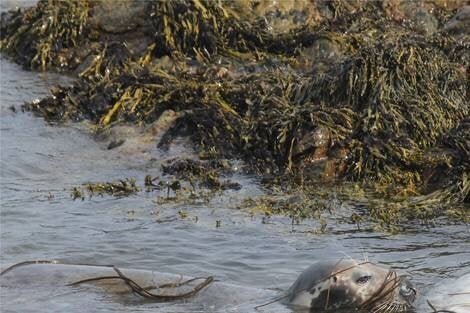What do the polar bear, European eel, African lion, hammerhead shark, devil ray, lead poisoning and marine debris have in common? Well, they are all on the agenda of the Eleventh Meeting of the Conference of Parties (CoP) to the Convention for Migratory Species (CMS). The title's quite a mouthful, but this meeting in Quito, Ecuador in the first week of November is critical for wildlife, and its agenda is packed with a fascinating assortment of weighty proposals.
The convention was established in 1979 and born of the idea that the animals that migrate across our planet need protection at both ends of their migration routes as well as along their migration corridors, all of which may encompass several different countries. Some animals make spectacular migrations. The grey whale, for example, swims more than 8,000 kilometres each way along the coasts of the U.S. every year, although this distance record has recently been challenged by wide-ranging humpbacks. Many less wide-ranging species also cross international boundaries, meaning their conservation depends on more than one nation.
CMS has traditionally welcomed into its care all species affected by trans-boundary issues, but what is most noticeable about this eleventh meeting is that many of the species to be discussed are marine. For example, no less than twenty shark and ray species are to be considered for addition to the convention appendices. This follows a trend within other international bodies, notably the trade convention (CITES), recognising the need to conserve marine as well as terrestrial animals. Arguably it also reflects our expanding activities at sea which are bringing us into increasing conflicts with marine life.
The CMS agreement lists threatened species in two appendices. Those threatened with extinction are listed on Appendix I and the convention countries are then required to address threats to them, including mitigating obstacles to their migration. Migratory species that need or would significantly benefit from international co-operation are listed in Appendix II of the Convention, and for many this leads to global or regional agreements. CMS also aims to help better understand and address threats, such as lead poisoning and marine debris.

Marine debris on Jeju Island, South Korea. Credit: M P Simmonds/HSI
Marine debris is having a devastating impact on our oceans. Many of us will be all too familiar with the unsightly, persistent and mainly plastic items that wash up on the strandlines. However, quantities of such debris of human origin are growing, and will grow further as production of plastics expands. What was initially viewed as a mainly aesthetic issue, we have now come to realise can be a painful matter of life and death for marine animals. Juvenile animals are particularly at risk. Curious young seals or dolphins exploring their habitat can encounter plastic netting or packaging and play with it, only to find they have become entangled and cannot escape. Whilst studying seals last month off Wales, I was struck by the way the young white-coated grey seal pups play in the seaweeds. They roll around and sometimes drape themselves in the soft yielding littoral kelps. Sometimes their mothers do likewise. Nothing in their evolutionary history prepares them for an encounter with an unbreakable plastic packing band or portion of netting which cannot be dislodged. Sadly, it is rare now to visit a seal colony anywhere in the world without seeing at least one seal, sea lion or fur seal with a plastic noose cutting into the neck. These terrible wounds attest to the fact that these seals first became ensnared as youngsters, and as the animal has grown, so the noose has become ever tighter.

Seals in the weeds. Credit: M P Simmonds/HSI
With an increasing volume of novel items appearing in their environment, seals, turtles, whale and dolphin calves and more are at ever greater risk of entanglement. Some animals will become ensnared and die underwater, but given that for a powerful whale dragging a net along with restricted movements and growing wounds, the average time to death may be six months, it can be argued that these are the lucky ones. Ingested debris may cause blockages and gut perforations and there is growing concern that small pieces of plastic act to transfer pollution into bodies of marine animals. Whether ensnared or ingested, clearly marine debris presents a serious welfare issue as well as a potential conservation one.
Nor is this a minor issue. An estimated 6.4 million tonnes of marine litter is dumped in oceans every year. In hotspots more than 3.5 million pieces of litter can occur per square kilometre. Plastic, which constitutes between 60 and 80 percent of marine debris, does not biodegrade and can persist in the marine environment for hundreds to thousands of years.
The good news is that the marine debris threat has been recognised, but will CMS be able to get to grips with it? There is certainly a need for improved international coordination and cooperation, but as budgets are cuts within the member nations, will the political will to act also be diluted? Even seemingly simple issues such as banning plastic bags are proving controversial in Europe at least. Nonetheless, CMS has bravely put a resolution on the table calling for improved action on this nasty issue, but it remains to be seen whether or not the nations gathered in Quito have the stomach for strong marine-facing actions. Attending the gathering for Humane Society International, I will be keen to see if sharks, beaked whales and others come away better protected or sorely let down, and whether action on global threats like marine debris that are so badly needed, will be meaningfully progressed.
Follow HSI on Facebook.
